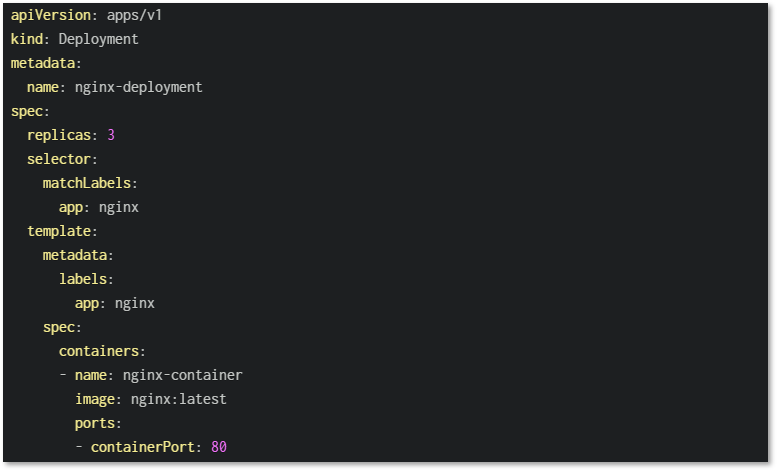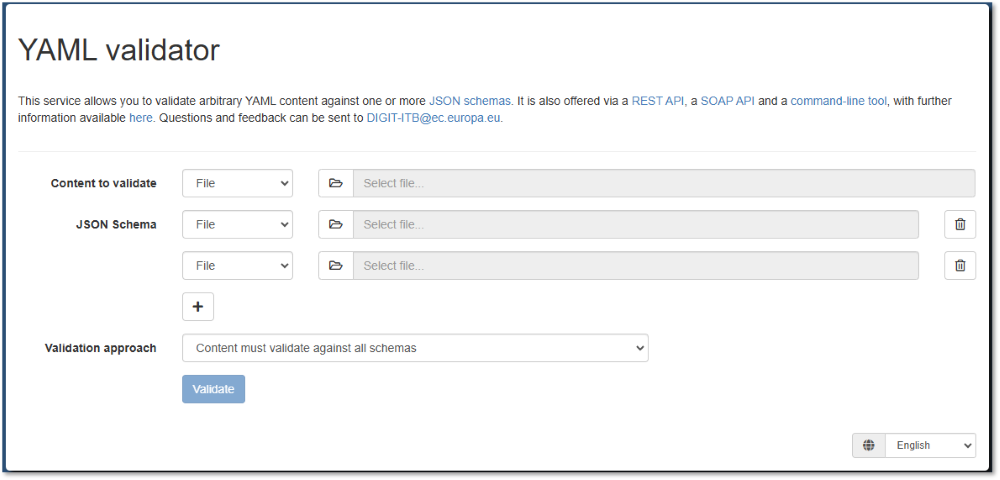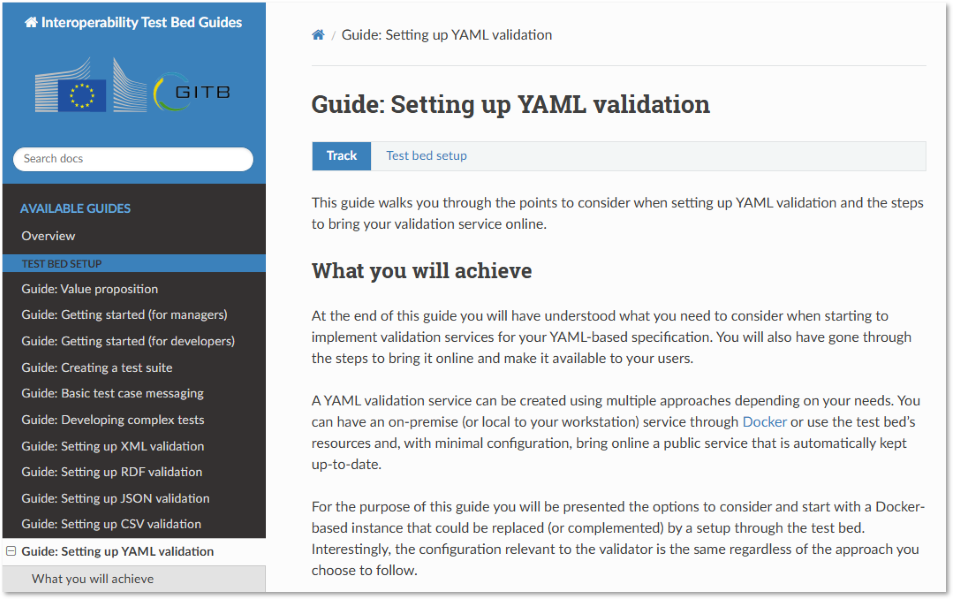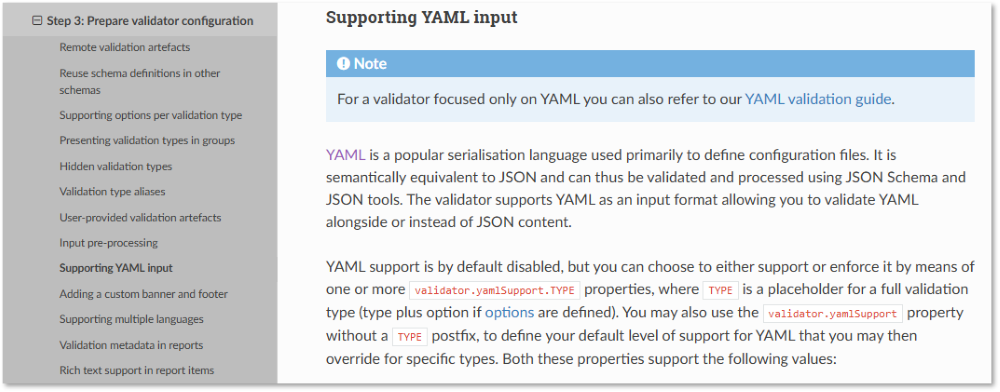
The Interoperability Test Bed now supports validators for YAML data, with rich step-by-step instructions and documentation through its YAML validation guide. A new reusable YAML validator is also available online for easy experimentation.

IT system interoperability depends on the exchange of data that participating parties can commonly understand and process. Ensuring that data follows the syntax and content requirements set out in solutions’ underlying specifications, is the focus of data validation processes, to apply quality control and ensure verified data is fit for purpose.
The Interoperability Test Bed has long supported data validation by means of its popular validators covering most common syntaxes (XML, RDF, JSON and CSV). Validators are flexible components that follow a configuration-driven approach to easily define and customise validation services for data provided via several input channels, and resulting in various report formats. They can be used as standalone services by users or within automation processes, but also act as validation steps in more complete conformance tests.
Validators extended to support YAML
Alongside the common formats already supported by the Test Bed’s validators, YAML (YAML Ain't Markup Language™) has emerged in recent years primarily as the norm for configuration data that is expected to be machine-processed but also understood by humans. Semantically, YAML is for the most part equivalent to JSON, albeit preferring specific whitespace rules as opposed to quotes and brackets to define objects and their properties. The following example is a manifest for a Kubernetes deployment that illustrates well what a YAML document looks like:

Given its near semantic equivalence to JSON, the accepted approach of validating YAML content is by meant of JSON Schema, used in principle to define structure and content rules for JSON documents. Building upon this characteristic, the Test Bed extended its JSON validator to support YAML as an alternate input format to JSON, benefiting not only from schema validation but also from the wealth of further configuration options afforded to JSON validators. Moreover, validators can be configured to focus explicitly on YAML content by simply requiring (as opposed to supporting) YAML input.
Complementing the support for YAML, the Test Bed team also published a reusable generic YAML validator, that doesn’t come with preconfigured schemas but rather expects them to be supplied alongside the YAML content to validate.

Besides configuring your own validator to match your needs, you may use this generic validator for experimentation but also as a building block in conformance test cases, exactly as a JSON validator would be used.
YAML validation guide
To simplify the definition of validators specifically for YAML, the Test Bed also published a dedicated YAML validation guide as part of its online guides. This guide acts as a step-by-step tutorial to set up your first validator, but also as a detailed configuration reference and user guide.

In case you are more interested in defining a JSON validator that supports YAML alongside JSON input, the JSON validation guide similarly features a detailed section on how to configure this.

Ultimately choosing between a YAML validator and a JSON validator that supports YAML, depends on your needs and what would make most sense for your validator’s users.
Find out more
For documentation, resources, and a listing of compatible tools, the official YAML site would be the place to check. Regarding validators, be sure to check the new YAML validation guide, or the similar guides for XML, RDF, JSON and CSV if you are interested in validation for those syntaxes. Concerning the Test Bed itself, general details on its services and use cases can be found in the Interoperable Europe Portal, with its value proposition being a good starting point for newcomers. To receive updates on Test Bed news and releases remember to subscribe to the Test Bed on the Portal, and to follow Interoperable Europe’s updates on X and LinkedIn.
The Interoperability Test Bed is a service provided by the European Commission’s DIGIT, offering conformance testing and validation solutions in support of IT systems’ cross-border interoperability.
Referenced solution


